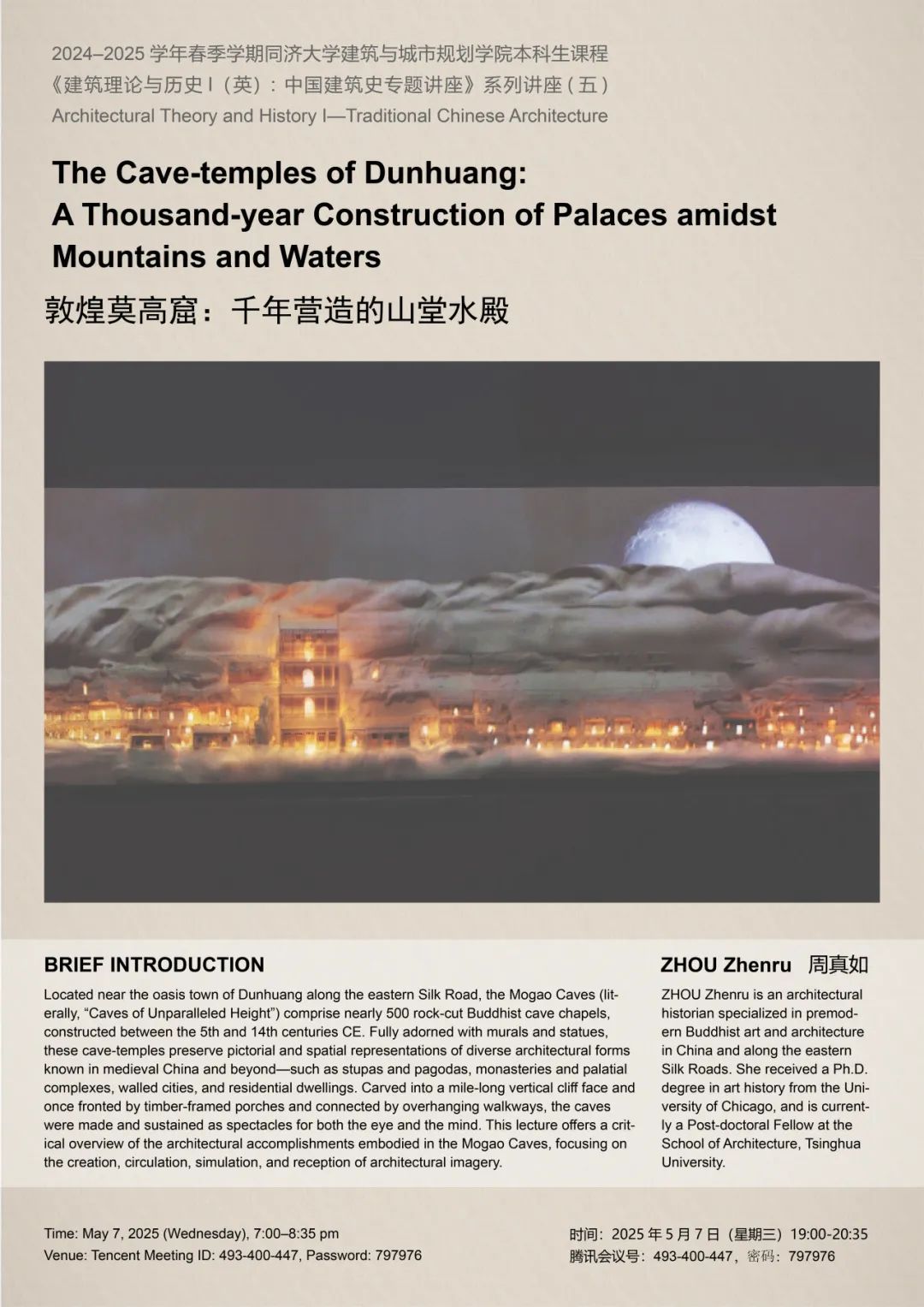
Architectural Theory and History I:
Traditional Chinese Architecture
The Cave-temples of Dunhuang: A Thousand-year Construction of Palaces amidst Mountains and Waters

ZHOU Zhenru
ZHOU Zhenru is an architectural historian specialized in premodern Buddhist art and architecture in China and along the eastern Silk Roads. She received a Ph.D. degree in art history from the University of Chicago, and is currently a Post-doctoral Fellow at the School of Architecture, Tsinghua University.
Brief Introduction
Located near the oasis town of Dunhuang along the eastern Silk Road, the Mogao Caves (literally, “Caves of Unparalleled Height”) comprise nearly 500 rock-cut Buddhist cave chapels, constructed between the 5th and 14th centuries CE. Fully adorned with murals and statues, these cave-temples preserve pictorial and spatial representations of diverse architectural forms known in medieval China and beyond—such as stupas and pagodas, monasteries and palatial complexes, walled cities, and residential dwellings. Carved into a mile-long vertical cliff face and once fronted by timber-framed porches and connected by overhanging walkways, the caves were made and sustained as spectacles for both the eye and the mind. This lecture offers a critical overview of the architectural accomplishments embodied in the Mogao Caves, focusing on the creation, circulation, simulation, and reception of architectural imagery.
Time
May 7, 2025 (Wednesday) , 19:00–20:35
Venue
Tencent Meeting ID: 493-400-447
Password: 797976
Reference
Zhou, Zhenru. “From Earth to Heaven: An Architectural Spectacle of the Dunhuang Mogao Caves.” Athanor 39 (November 2022): 171–192. https://doi.org/10.33009/FSU_athanor131171
Zhou, Zhenru, and Luke Li. “Vision and Site: Revisiting a Pure Land Cave of Dunhuang.” Religions 15, no. 3 (2024): 329. https://doi.org/10.3390/rel15030329
Zhou, Zhenru. “Dunhuang Architectural Studies, 1926–2024.” Heritage 8 (2025): 101. https://doi.org/10.3390/heritage8030101
 ABOUT US
ABOUT US




